Technological advances in mid-19th century France saw a proliferation of black drawing media, which gave rise to unprecedented experimentation in drawing and printmaking. This episode explores the Getty exhibition Noir: The Romance of Black in 19th-century French Drawings and Prints with curator Lee Hendrix, who discusses how a group of artists drew inspiration from the color black, with all of its imaginative and narrative associations.
More to Explore
Noir: The Romance of Black in 19th-century French Drawings and Prints exhibition information
Noir: The Romance of Black in 19th-Century French Drawings and Prints exhibition publication
Featured works from the J. Paul Getty Museum
- Théodore Géricault, Sailboat on a Raging Sea
- Gustave Courbet, Head of a Sleeping Bacchante
- Odilon Redon, Head within an Aureole
- Odilon Redon, Apparition
- Georges Seurat, An Indian Man
- Georges Seurat, Madame Seurat, mère (Madame Seurat, the Artist’s Mother)
Transcript


JIM CUNO: Hello, I’m Jim Cuno, president of the J. Paul Getty Trust. Welcome to Art and Ideas, a podcast in which I speak to artists, conservators, authors, and scholars about their work.
LEE HENDRIX: We see this demonic face that is a mask of evil, with a huge eye that is just popping out of the socket almost, with this demonic fury.
CUNO: In this episode, I speak with Lee Hendrix, former senior curator of drawings at the Getty Museum and curator of the exhibition Noir: The Romance of Black in 19th-century French Drawings and Prints.
Nineteenth-century France was preoccupied with the color black. It was the color celebrated by Baudelaire as an indicator of modernity: the shine and sheen of a variety of black fabrics; the expressive depth of black ink and oil paint; and black as a metaphor for spiritual richness, as in his celebrated volume of poems, Les Fleurs du mal (The Flowers of Evil), published in 1857.
The different ways that French artists explored the expressive power of black was the subject of the exhibition. I met with Lee in the galleries to look at some fantastic works by Gericault, Goya, Delacroix, Courbet, Odilon Redon, and Seurat.
We’ll begin with a small, seemingly incidental drawing, actually a calling card, by the artist and novelist Victor Hugo. It dates from 1855, and was in fact, perhaps a calling card. But it looks more like a metaphor, a calling card from the other side of reality. Lee, describe it for us, if you will, and tell us its contribution to the theme of the exhibition.
HENDRIX: You have to get very close to it to see what’s actually going on. It’s a very mysterious piece. You see a puff of smoke, kind of liquid smoke, in the dark depths of the cosmos. And from this puff of smoke, if you get very close, you see a kind of form materializing. Underneath the form, you can make out the letters “Victor,” and backwards, “Hugo,” floating in the cosmos as a kind of a chair. And on top of it is a separate piece of—tiny piece of paper that’s glued over it, in pen and brown ink and some brown wash and white wash. And if you look at it, there is a tiny castle with a looming black shadow of that castle that looms in the background. So you see a puff of smoke, the name of Victor Hugo supporting this little calling card with a castle in it. Now, that castle, we believe, is Guernsey, where the artist was living in exile, after the coup d’etat of Napoleon III.
CUNO: So was it actually, do you think, a calling card? I mean, was it for someone that he made it? Or was it just a metaphor?
HENDRIX: Yes, he made a number of these calling cards as kind of very complex self-reference that he would send back to his friends in France.
CUNO: So it’s not uncommon for Victor Hugo to have made this drawing or drawings like this. He made drawings for decades prior to this drawing. Is that correct?
HENDRIX: That’s correct. He was always exploring the unknown and themes of darkness in his drawings, absolutely consistently. And he had a range of subjects. He was always using very dark ink. And oftentimes, the subjects have a kind of cosmic dimension. He was the first person, really, to work in images that were almost like a Rorschach ink test. He called them his taches, his touches. And this particular drawing kind of grows out of that search for the form in the black cosmos. But in this particular case, it’s his name, it’s his identity. And I think the complexity—we have to remember he is a writer. So he’s constantly dealing with literary themes and letters, and these words and images are a big part of his artistic output. And he’s searching, also, for expressions of his own self-identity as a writer. And so I think it’s particularly apt. And of course, Hugo had a very healthy ego, as well. We both—we all know that Hugo really understood his greatness in his own lifetime. And so the fact that we look at this small, this tiny, seemingly insignificant calling card, and yet it has these cosmic dimensions of his name that is appearing like the god is suddenly, you know, spewing forth the creation of Victor Hugo’s name as a kind of planet, you know.
One of the beauties of Hugo drawings are the kind of free-association aspects of them, because he’s actually asking the person who looks at this image to understand the essence of creation itself, and to begin to associate and free associate, and to spontaneously create as well. And so the fact that this image seems to just come out of the void of the black cosmos really, to me at least, speaks of the beginning of the creative moment itself, the artistic mind.
CUNO: Let’s go to a second drawing. So now we’ve stepped back in time some thirty-five years, to a drawing of a sailboat on a raging sea, by the Romantic artist Théodore Géricault. The sea looks like it’s about to engulf the boat, as the boat’s sails are filled with the force of gale-force winds. Lee, tell us about this drawing and how this drawing fits into the theme of the exhibition.
HENDRIX: The drawing is tangentially related to his most famous painting, The Raft of the Medusa, in the Louvre. It’s a kind of reportage of a gruesome story in the newspapers of people being left on a raft to die in the sea and ultimately, resort to cannibalism. But this drawing is so fascinating because it doesn’t have a sign of human life. What we see is a kind of brigantine ship with black sails that are spikey and have light, cold moonlight shadows on them, as it tosses and turns in these enormous waves. You can see the white watercolor and the black ink on a ground of kind of light tan paper. And these huge waves, one coming up in the cold moonlight of the sea, the other in the black darkness, almost spilling out of the page, engulfing the ship. And then the tiny, very thin wash indication of a boat that disappears on the horizon, a kind of metaphor for the disappearance of hope altogether.
CUNO: This drawing is dated to the same year as The Raft of the Medusa painting, but it also could date from after, later in that year or early in the next year. So what would be the purpose of a drawing like this? Was that a market for Gericault drawings at the time? Could it have been made for the market? Or was it just for him to investigate further, the thematic dimensions that he’d explore in that big painting?
HENDRIX: There was not really a market for Gericault drawings at this time. So this would’ve been a studio exercise. And I think the interesting aspect of this is the exploration of waves at night. And it conjures up a kind of terrifying vision. I think drowning at sea is horrible under any circumstances; but it’s even more terrifying, I think, under the cold darkness of night.
CUNO: Now, we know that Gericault studied the theme of drowning at sea and the theme of the terror of the sea itself, from the newspaper accounts of The Raft of the Medusa [Hendrix: That’s right]. Would he have seen the sea? Would he have gone out onto the sea himself? Would he have experienced some of this terror himself?
HENDRIX: Yes. He actually visited Le Havre to understand the water itself. And we think that this study—there are other studies of waves that date from this experience. So he truly was trying to build a real firsthand knowledge of the action of water. And I have no doubt that he then studied it at night.
CUNO: Now, it looks very much like the Hugo drawing that we saw, which postdates the Gericault drawing by some thirty years. Was Hugo, over the course of those thirty years, aware of Gericault’s drawings as a kind of model for his own work?
HENDRIX: He was certainly aware of Gericault’s paintings, and quite possibly his drawings. Gericault was such a seminal figure for both literary—both writers and visual artists. His—he plumbed the depths of despair and the darkness of reality and human emotion and human mental depravity, in ways that really broke the barrier, both in a literary way and in the visual arts. And Hugo, absolutely without a doubt, would’ve known his work. Paintings, certainly, and possibly drawings and oil sketches of dismembered parts, as we know Gericault visited morgues and he really explored madness in a kind of unfettered way that had never really happened before. So Hugo, whose own work went into the very horrible realities of urban life and the Industrial Revolution and what really had befallen humanity certainly would have been very familiar with Gericault.
CUNO: So near to the Gericault drawing are prints by the Spanish artist Francisco de Goya, dating from the very end of the eighteenth century. They are complex, a mixture of etching, aquatint, drypoint and burin, and are beautifully inked in various shades of warm browns to deep blacks. Lee, tell us about this one, titled When Day Breaks, We Will Be Off, from the series of prints called Los Caprichos, a term I once read, anyway, as referring to “the goat who scorns the huddle of sheep on the valley floor to browse dangerously on the cliffs,” a reference to the follies and ignorance Goya saw in Spanish society all around him. How does this relate to the theme of the exhibition, both the literary theme and the technical themes explored in the exhibition?
HENDRIX: That’s quite apt. Foibles, human foibles in the most cosmically evil sense, that’s what is the theme of Los Caprichos. And the way that Goya is able to convey the cosmic enormity—and I use that word really seriously, enormity—of folly and evil, in these small prints that are really, I would say, you know, four and a half inches across and probably six inches high. And yet, look at what they produce.
Now, this particular one is called When Day Breaks, We Will Be Off. And the title itself, in Spanish, is at the bottom. And again, one of the themes of this exhibition is the way that it ties together literary efforts and visual to pull together words and images. The titles were all invented by Goya himself. And the images themselves kind of bring the figural realization to these rather enigmatic words. And we see here, this horrific group of what we can maybe describe as witches.
CUNO: It’s more of a pile of witches than it is a group of witches.
HENDRIX: [over Cuno] It’s [chuckles] more of a pile of witches, piled onto each other. Again, we kind of go back to Gericault and the body parts that he drew in morgues. Their bodies are—they’re nude. And they’re horrifically deformed, in terms of claws for nails, claws for their toenails. They are piled on top of one another. One—they’re women. One horrible old hag is sitting on top of the fat and distorted buttocks of another old hag, while she sort of holds forth with her arms outstretched to these other awful incarnations of human flesh. They talk to each other. And presumably, this awful crone who sits on the fat one is saying to the others, “When day breaks, we will be off,” as they’re huddled together. And what’s quite marvelous about this whole series of Los Caprichos is that they all take place on the backdrop of the night sky. And they take place on a bare surface that really indicates the kind of surface of the planet. But it’s always bare and it’s devoid of any softening plants or growth. It seems to only give rise to these humanoid horrors. And you can see here, the looming shadow of this awful crone that kind of dominates this ball of witches, looming against the starry night of the cosmos. And in this way, to just define in the barest of terms, the kind of surface of the earth and the cosmos, the sky, brings the enormity of human evil and folly into the largest possible kind of conceptual arena.
CUNO: Now, when we saw the Hugo drawing, we imagined that it was made by him in exile, alone or with a small group of friends in exile, and therefore, not for public consumption. Maybe as a private gift to a friend or something. And then with the Gericault, we imagined that it was a drawing made as part of his studio practice as he was preparing a painting, and it wasn’t for the marketplace; it wasn’t to be seen by others. But this is a print. This is a print. It’s a multiple. It was made in an edition of some number of copies, and we assume it to be made for a public. Do we know anything about the public for which it was made?
HENDRIX: Yes. This series of prints, the Los Caprichos, was printed in a relatively large edition and circulated very widely. Now we’re looking at the precursors of the kind of main meat of the exhibition. The exhibition proper starts in 1850, but we’re exploring in this first gallery that’s called Dark Romanticism, the figures that really gave rise to the French noir artists, 1850 to around 1900. And Goya was absolutely critical, perhaps the most critical artist, to what was to come after. And as of 1850, his work was almost unknown in France, except for this series of prints. And this was really the signature calling card for Goya for French artists. And what it signified to them was an exploration of the kind of twisted human universe, the putting together of the forces of a kind of unleashed artistic creativity. Goya, to this very day, I think most people would say his imagery has no boundaries. It has almost no origin, in terms of the horror of it, and fused with a fantastic element. And this came into circulation, this series of prints, Los Caprichos, came into circulation in France, and this is the real essence. This is what French artists knew about Goya. And it was a catalyst for then, further explorations of darkness and evil and cosmic terror that really was a part of the literary and the visual arts, a strong part of it, throughout the nineteenth century.
CUNO: Now, the theme itself, or the subject of the print, is grotesque. But the means by which it was produced—that is, the fineness of the etching and the extraordinary fineness of the aquatint—would seem to betray the grotesqueness of the subject. In other words, if you were going to make a grotesque print or subject, you’d have thought he’d have used something that was itself grotesque and difficult and forceful. But aquatint is meant to be a very fine, delicate print technique. Tell us something about the aquatint process itself, the technique, and then tell us about his application here in this print.
HENDRIX: Absolutely. So the artist, Goya in this case, he would cover the plate with a wax…
CUNO: A copper plate.
HENDRIX: [over Cuno] A copper plate, with the wax, and then draw into the plate with a needle. This technique, as well, is crucial for our story, because printmaking at this time became, it had kind of ossified into a craft, and it was largely in the service of replication, replicating paintings. And that was a whole technique that was highly—you had to go to a special school, and it was not at all spontaneous. So what Goya does by using the technique of etching, where it’s absolutely free—I mean, it is drawing. It’s a form of drawing, drawing on the copper plate.
CUNO: [over Hendrix] ’Cause cutting through that wax is very easy to do, relative to cutting directly through the metal of the plate.
HENDRIX: Exactly. Relative to engraving that cuts into the metal of the plate. And with etching, you just draw freely into the wax. You don’t even apply pressure. I mean, the needle itself, you know, is like a pencil really. And so, with this technique, he could absolutely just spew forth ideas. So this is a important aspect to all of this show, is that painting and printmaking, because printmaking became what the French call a peintre graveur, a painter-printmaker. You didn’t have to have any special education. You could just draw directly onto the plate. And this—the Caprichos from Goya were a big factor in helping artists to understand that they could spew forth their ideas, their innermost thoughts, spontaneously onto the plate.
CUNO: Alright, let’s cross over to the other side of the gallery and look at another print, a lithograph, a different kind of print technique. One that was employed by Goya, but in this instance, employed by Eugène Delacroix, who was a younger sort of follower of Gericault, who we described earlier with regard to the watercolor of the boat at sea. But in this case, he’s depicting—Delacroix is, in 1827—depicting Mephistopheles flying over a ghostly city. Mephistopheles himself being the demon worker of Satan, from Goethe’s Faust. So tell us first about the technique of lithography and how that made itself available to artists, peintre graveur artists like Delacroix or Goya before him as a kind of immediacy of drawing on stone.
HENDRIX: Well, like etching, lithography is about drawing directly on the stone. So there’s no special school that you have to go to learn this, and there are no constraints. It is simply drawing with a crayon, a water-resistant crayon, directly on the stone. And—
CUNO: And it’s water resistant because it’s waxy.
HENDRIX: Yes. Yes. And here, we see the—again, the fusion of literature and imagery. This is the first French translation of Goethe’s Faust, which explores the tragic story of Faust, the man who was in a league with the devil. And in this image of Mephistopheles flying over the city, I think Delacroix has discovered, creatively, the most iconic Satan figure, one of the most iconic in the history of art. We see this demonic face that is a mask of evil, with a huge—it’s turned profile, as he flies through the sky. And it’s a huge eye that is just popping out of the socket, almost, with this demonic fury. And this enormous kind of slash of a smile across this dark face, with these enormous hands, which sprout these very long horrid fingernails. And these wings that are equally as scary, with their big feathers kind of exploding, as Satan mocks the world, laughing, flying across the night sky, spreading evil. And this is also an interesting theme for the exhibition, because we first encounter here the evil of the city. And this is a big theme, that human civilization, and especially the urban fabric, is a kind of cesspool that basically, almost the fumes of which make evil come into being and are governed by uncontrollable forces of evil. And in this one, it’s interesting that Satan is so exultant. He’s laughing. He’s happy. And you can—I mean, in the most hugely evil sense of dominating this city in the night moonlit sky with its many spires coming up into the moonlight. Of course, you can’t help but think Paris. This is the evil incarnation of Paris itself.
CUNO: And then the way that Paris is drawn, or the city that might be Paris is drawn, it looks as if it’s waves of the sea, and it reminds us of the Gericault drawing, with the boat being subject to the violence of the sea. In this case, the city represents a kind of latent violence, as you were describing it. But flying over, this Mephistopheles has, his body drawn so firmly with this crayon on the stone, now taken ink and printed on the piece of paper. But then it’s picked out, so that you can see as if he’s come back, after he’s drawn the form onto the stone, before actually putting the ink to the stone, he’s picked out some of the highlights, as if it were white highlights on black. But the white, of course, is the paper that hasn’t been printed, because of the way he’s worked the drawing on the stone itself.
HENDRIX: That is really so interesting. And I’m seeing—I’m seeing new things in this print as well. You can that Delacroix has backlit the spires of the city, as the moon casts this cold light that silhouettes all the spires. And remember that lithography is basically a tonal medium, and it has a lot to do with shading, because you’re drawing with a kind of a thick crayon on the stone. And you can see the individual strokes here of the lithographic crayon.
CUNO: So with these four images, two by drawing and two by printing, we’ve set the stage for the rest of the exhibition, which is the meat of the exhibition, as you’ve described it. That is, by looking at Hugo and then by Gericault and by Goya and by Delacroix, we sort of set the thematics of the exhibition, both in content and in technique. But let’s then cross over to the next gallery and look at, from that generation, which we identify as the romantic generation, to the realist generation. And we begin with Courbet, Gustave Courbet, with the Head of a Sleeping Bacchante. So tell us about this drawing.
HENDRIX: Courbet was the great realist artist of the nineteenth century. And realism had to do with the depiction of working class people. It also had to do with the rejection of an idealized mythological and historical world, and a turn towards the gritty realities, if you will, of human life. And Courbet treated his materials as part of the evocation of the grit and tangible quality of human life, and never more so than in his drawings. He chooses a heavy, black chalk in this really big drawing. Remember that paper was made in molds, and at this time the size of the molds limited the size of the piece of paper you could even obtain. And this is a very large piece of paper. I would say that it’s well over a foot, probably thirteen inches across and probably seventeen to eighteen inches height. So that it’s very nearly life size. And it is made, as I said before, with this powerful and very gritty black chalk. And it show—
CUNO: [over Hendrix] I think he called it fabricated chalk.
HENDRIX: Fabricated chalk.
CUNO: [over Hendrix] Now, what does that mean?
HENDRIX: Well, because at this time, natural black chalk, which artists have used from really medieval times on, was mined in the ground. And this is—we’re talking—this drawing is dated 1847 by Courbet. This is the kind of height of the Industrial Revolution. And part of that is that artist materials were being made in factories. This is the birth of art supply stores. Before now, artists made their own materials. Black chalk was mined in the ground. But now it was made in factories and it had particular properties. You could vary the binder in it and it could produce different aspects. This particular fabricated black chalk, Courbet has used it to produce these just tangible deposits. It’s so thick here along the shoulder, and you can see this face, life-sized face of this sleeping girl. She has very full lips, a full nose, full eyes.
She’s got a fleshy face. She’s got a very simple costume on. It’s just a kind of housedress, with a little tie around the neck. Her hair is caught up in a bun. But she wears on her head, a wreath of vine leaves. So who is she? She’s not really a bacchante, because she’s a real person. So that’s Courbet’s way of kind of exploring mythology. She has a costume of bacchante on, but she’s a very real human being. And the—
CUNO: [over Hendrix] So as if calling into our—to make it obvious that that mythology is a fabrication.
HENDRIX: That’s exactly—that mythology is a fabrication and even a falsehood. And he is evoking the reality of this girl, by the very thick and energetic application of this very black chalk. And you can see that he put this big piece of paper probably on a rough surface and then he began to shade vigorously. And you can see that the kind of pits of this rough surface catch deposits of material that give the surface itself a real tangible—a sense of the tangible accretion of material. And then he’s gone in and modeled this very soft face by removing material with a big stump.
CUNO: [over Hendrix] By rubbing it off? [Hendrix: Yeah. They—] Or by a stump, yeah. Well, tell us about a stump. What is a stump?
HENDRIX: [over Cuno] Well, stumps, it’s an early form of eraser. Of course, the gum eraser had not yet been invented. But they used paper stumps, so rolled-up pieces of paper, rolled-up pieces of leather, but also just plain old breadcrumbs. And it’s not impossible that Courbet made the highlight of her cheek by removing it with breadcrumbs. And you can see the softness of the leaves, but also the three-dimensionality is made by stumping and removing these heavy deposits of chalk with various stumps or breadcrumbs. And also there’s a physical quality. You can really see the action of the artist’s hand and his energy, as he makes these thick strokes all over the drawing. So much action, in fact, that he makes the tendril of that vine leaf that flows down her beautifully illuminated neck actually with a needle. And he just carves right into the picture, so that all of this brings her physically present, physically and materially present.
CUNO: Yeah. I mean, this idea of the realism that we associate with—the term we associate with this kind of drawing or the art made at this period is both about the nature—the subject matter of it—that is, the subject taken matter taken from real life; but also the reality of the means by which the subject matter is rendered in drawing or rendered in print. And I remember Charles Rosen and Henri Zerner writing about romanticism and realism, and quoting Flaubert, Flaubert who was so preoccupied with the reality of the materials, the words that he had to use and the sentence structures and so forth, that it was in the making of something and making apparent how that thing was made, that it was equally real as the thing—the subject that was rendered in the thing made.
HENDRIX: This is absolutely true. And really, right here, we get the kind of seeds of what we associate with modernism, which is the almost primacy of the medium over the subject matter. It’s only in its very nascent form here. But the materiality of the medium is almost first perceived here. And the deep deposits of this black and the grittiness of it is as much of a part of the image, really, as the subject matter. Also the presence of the paper. Not just as something that can be covered up, but as something that can be dug into and worked. And he wants you to see the paper and the real accretion of media on the paper. So absolutely, we think of Courbet as the master of the kind of physicality of paint. But he was also one of the insipient lovers of the materiality of the drawing as an object.
CUNO: I think of anyone coming to this exhibition, with the title that it has and the date parameters that are given for it, they would think to find Courbet. I think they would be very surprised to find themselves looking at a drawing by Théodule Ribot, an artist probably not known to most who would come, a drawing that is spectacular. This drawing in which there’s this mottled face of a woman, which seems to emerge from the inky darkness of the—by the light of a torch or a fire or something illuminating just her face, otherwise completely submerged in the darkness of the corner of a room.
HENDRIX: Ribot is an artist that most people will not have heard of. He is a unique draftsman, as you see here. And his preferred medium is black ink. And if you look at this drawing, and it’s a head of an old woman in a black veil and a black dress, and this head emerges from deep, deep shadows. But it is kind of—its very wrinkled countenance, and the drooping eyes, the large nose, the kind of crack of the aged lips is illuminated by a flickering light that you can only sort of imagine must be a candlelight. I mean, there’s so much movement in it. And if you look at this drawing, you could swear that this highly contrasting, brilliant illumination that kind of dances over all of these wrinkles is made by white watercolor. It is so bright. But you look closely at the drawing, and you can see that the entire drawing is made in tones of black and gray ink. And these myriad and very irregular white lights that dance all over the wrinkles, the folds in her neck, her kind of Adam’s apple, the lumps of her chin and her cheek and her eyes and her wrinkled forehead, you could swear that these were white paint. And in fact, they are what the French call the reserves of the paper. They’re the white paper. And so in making this drawing, which is entirely done with a brush, he had to plan, but in a very spontaneous way, plan to leave blank all of these white—tiny, white, irregular—they’re not really highlights in the old sense of the word, where you could just pick out one highlight. They’re just dotted all over this face, as it emerges from nearly total darkness. And so technically, this drawing, it calls for a lot of control and a lot of inner planning.
CUNO: It’s almost a negative as rather than a positive. In other words, what the image is is what wasn’t drawn.
HENDRIX: It almost looks like a photographic negative. It absolutely does. And I have to say that part of the story of this exhibition, I hope that people in the future will take the core of this exhibition and run with it. And photography has to have a role here. We couldn’t really deal with photography because it’s such a huge subject in and of itself. But this drawing, with its amazing depth of darkness, but then kind of relieved by these brilliantly lit passages, certainly calls to mind a photographic negative.
CUNO: Now we’ve come to a wall of drawings and lithographs by Odilon Redon, the mysterious, elusive images of The Eye Like a Strange Balloon of 1882, next to a spectacularly evocative drawing of a radiant light or luminous light surrounding an eyeball-like orb with a detached man’s head floating within or superimposed upon the eye’s pupil. Tell us first about the lithograph that precedes the two drawings, the lithograph titled The Eye Like a Strange Balloon Mounts Toward Infinity.
HENDRIX: We’ve talked about lithography as the capacity to draw directly on the stone. And this black and white lithograph could be a charcoal drawing. It shows the infinity of a sea, the surface of the earth. You define it. One of the aspects of Redon that’s so intriguing is that he himself leaves so much to the imagination. I would’ve said this is an infinite, quiet sea, but you see some sort of blades of grass in the foreground. It could be water, it could be the surface of the earth. Very low horizon. And the majority of the image is this sky that is filled with clouds. And upwards, over this vast expanse of sea or earth or whatever, floats this balloon. And the balloon consists of the gondola, which is a big plate carrying a severed head. Could this be John the Baptist? It might have a religious connotation. But from this head, extend a whole host of threads, of moorings that then attach to this large eyeball. There’s no other way to say it. It is an eyeball. And the—
CUNO: [over Hendrix] But meant to look like a balloon.
HENDRIX: Meant to look like a balloon. And the kind of socket of the eye is black, a kind of velvet black. And within this socket is the eyeball itself, turned upward. And you see the white of the eye, the iris and the pupil, and then this sort of luxurious eyelash that propels the kind of upward turn of the eyeball, and the upward turn of the eyelashes, propel the balloon upwards into the infinitude of the sky. It is the opening print of a series entitled To Edgar Poe. Each of these prints in the series has an enigmatic title. This one, as we’ve repeated, The Eye Like a Strange Balloon Mounts Toward Infinity. The titles relate only obliquely to Poe’s writings. But at that time, these visual artists thought of Poe as exploring boundless imaginary realms. And so Redon attempts to kind of parallel the boundless literary realms of Poe into his own series of images that themselves have no boundaries.
CUNO: And its reference to Poe—and indeed, the reference to Poe, the titling of the entire series of prints to Edgar Poe, as if dedicated to him—is not a reference to a particular text by Poe, but rather to a sensibility that the two artists shared?
HENDRIX: That’s exactly right. In much of this noir work, there’s a hand-in-glove relationship to literature and to the verbal world of the imagination. And a lot of this could’ve been in response to the very Industrial Revolution that was flourishing at this time. I mean, remember, Paris was the city of sin and in the minds of many, evil. And there was a kind of capacity and urge to retreat into the world of the imagination, both literary and visual. And these series of prints like To Poe would’ve been discussed and kind of enjoyed in the privacy of a study.
CUNO: Let’s look at this other drawing. I know that this drawing is one that you recently acquired for the museum, and it didn’t even make it into the catalog, it’s so recently acquired. It’s an astonishing drawing. Describe it, because it needs ample description.
HENDRIX: Redon is known, towards the end of his career, as one of the greatest pastel artists who ever lived. He was obsessed with color. But he only reached the discovery of color through the exploration of black. And the quality of charcoal, which is that it floats, is exactly the same as the quality of pastel. It floats, too. It’s made of these powdery particles. All of it has to be fixed. And this drawing marks a kind of halfway point between the noirs, the earlier charcoal drawings, and Redon as the full-blown pastel artist. It shows again a severed head that’s surrounded by a round form in black charcoal, flecked with brilliant blue cobalt that reminded me of the iris of an eye. And this in turn is surrounded by this glowing cloud of pinkish pastel that—it floats to the kind of surface of the image. And again, this is a very large drawing, the size of really a painting. And it seemed to me to be a head that kind of doubled as an iris, with the floating eyeball in the pinkish floating cosmos. But other people who have seen this drawing this drawing reminds them of a kind of John the Baptist type head on a dish. Whatever it is, the eyes are closed, the mouth is covered in the black shadow of the charcoal, and the head is—it’s a male head, and it seems to be lost in sleep, dreams, or death, in any of those things.
CUNO: And maybe the coincidence of seeing this just two frames away from the lithograph by Redon that we looked at, which features this eyeball-like balloon—we’re seeing that earlier lithograph from the vantage point of the earth, looking to see this eyeball float up into the sky. This gives you the impression, if this is, in fact, a similar eyeball-like balloon with this severed head and the pupil, as if we are above it in space, surrounded by the same cloud formation that surrounds the eyeball, as if it’s untethered and we are untethered.
HENDRIX: That’s exactly. This is really in the infinitude of the cosmos. And we’re floating. And to relate to this image, it’s all an unstable mixture of floating in the cosmos. And that’s—I think is what the image is asking the viewer to do, is to again, remove the kind of tether of the earth and be in this vague and inchoate floating cosmic realm.
CUNO: So this is the proper point to then leap from this bizarre world of Redon and then land in the mystery of Seurat—the master of the shadow, Georges Seurat. First, to a very early drawing by him, made, Lee, you’ve written, of charcoal and powdered charcoal, when the artist was barely twenty years old. You identify the subject as an Indian holy man, and you’re showing it next to a drawing of what looks like the same subject—that is, the same holy man—a drawing done perhaps at the very same time, by an artist lesser known, named Émile Jules Pichot. There’s a story between these two drawings. Tell us that story.
HENDRIX: Well, this is one of the kind of ways in which today’s art world kind of reveals material that you never knew existed. This drawing by Seurat is really his most famous and astonishing early work. I mean, it’s incredible to think of him drawing this emaciated Indian holy man when he was scarcely twenty. It’s a very famous drawing. It is singular in his oeuvre. There are no other drawings of this extraordinary model. And the Getty acquired this drawing several years ago. And really just months after it was—we acquired it, a private collector came to the drawings department and pulled out a photograph of this drawing by Pichot. Now, what’s remarkable is that in Seurat’s drawing, he takes a very innovative approach. The figure of this Indian holy man is absolutely sunken. He’s emaciated, starving. You can see almost every bone in his shoulder, the pits in this back. He’s so thin that around his shoulder blade, there are deep declivities. But his face is turned into the pure sunlight, away from us. So we have no idea what he looks like. And when this collector produced this Pichot drawing, lo and behold, we see his face. So the man kind of has an identity. We had no idea that this drawing existed, but clearly, there is a life drawing session in which Seurat and Pichot drew this extraordinary model, sitting from different vantage points. And here we see, in Pichot’s drawing, that he has kind of a large nose, a big, heavy brow. But again, it’s clearly the same figure, with the topknot and the long beard, and the very emaciated stomach, with its folds around the navel.
CUNO: Both of these drawings, you called it from a life study session, because both artists were students of the same teacher?
HENDRIX: They were both students at the École des Beaux-Arts at the same time. And Pichot—and by the way, we know almost nothing about him. And this was a real milestone for the discovery of Pichot, because this drawing is signed. So there can be no doubt that it’s by him. They studied with—simultaneously, but with different teachers. Pichot was a student of Alexandre Cabanel, and Seurat was a student of Henri Lehmann, both very strict academic artists. But by this time, Seurat had his own studio, in the late 1870s. And it could even be that they were friends and they did a life drawing session in Seurat’s studio, because this Indian model is absolutely exceptional. There were no other models like him in the academic kind of pantheon, because most of the models were chosen to look like gods, in a way, with muscular physiques, and this extraordinary model wouldn’t have had a role in paintings, because they didn’t do paintings. They painted Middle Eastern themes, but France in the 1870s, they weren’t painting Indian themes.
CUNO: Yeah. And what’s compelling about the comparison of the two is how the two artists see the same man so differently, in other words, what’s nascent in the depiction of the man by Seurat is the use of shadow, that he then takes to be the signature element of his drawings thereafter.
HENDRIX: He is himself really from the beginning. And this—there are no lines in this drawing, except for a few defining the mattress that he sits on. But it’s mostly drawn with a brush and a powdered charcoal called sauce. And the face is turned into the bright sunlight. And he’s removed all of the material of the long, long beard, so that it kind of decomposes in the bright light and emphasizes the kind of spidery thinness of the man. Whereas Pichot, who is a much more conventional, academic artist, portrays him from the rear. And you can see a kind of bulging musculature of the back, which is—and a kind of poised pose that could hint at action. Whereas this slack, motionless, shadowed, abstract form of Seurat is almost a kind of excuse for portraying just the separation of light and shadow.
CUNO: So then in a drawing of just a few years later, he draws his mother, Seurat draws his mother, entirely of shadow as it were, in which there is no evident line, but just the shading that’s used to pick up the darkness, can define lips, the shadow beneath the nose or the shadow of the closure of the eyes. This is a signature Seurat. This is the Seurat we know and love as a draftsman.
HENDRIX: By this date of around 1882, Seurat had given up charcoal drawing, which as we remember, is the powdery medium that you remove material with stumps. And he had developed his very limited media that he would never stray from for the rest of his very short career. He died when he was in his early thirties. And the media—
CUNO: It’s Conté crayon?
HENDRIX: It’s Conté crayon. And what Conté crayon is, it’s a black manmade crayon with a binder. And it is not very erasable. And he used this black crayon on a textured laid paper that was made by the Michelet firm. And you can see the dots of the paper. And it’s done entirely with incredibly controlled shading. So as he perceives the light and the shadow and varies the pressure of this crayon, more material either gets caught on the high points of the texture and is left out of the pits of the paper.
So by varying the shading, he’s able to produce this ghostly form. It’s of his mother. He ate dinner with her every night of his life until he died. He was the youngest child by many, many years, and she was particularly tenaciously fond of him. And again, it’s one of these very, very intimate, proximate views, but taken to the most abstract so that with this delicate shading, her face emerges. Her eyes are closed, her face is downcast. Perhaps she’s sewing. And she emerges from the dark shadow, almost like a ghost. And I really associate this kind of egg-shaped abstraction with the future, with somebody like Brancusi. He was seeing in such pared down geometric terms.
CUNO: Yeah. So we’ve come a long way, even with the same decade, from Redon to Seurat, we’ve come a very long way from Goya to Seurat. This has been an extraordinary exhibition, Lee, and thank you for sharing your passion for darkness, at least in prints and drawings. The exhibition is beautiful. It’s also haunting and mysterious, as appropriately so. So I want to thank you for the time you’ve taken to talk to us on this podcast.
HENDRIX: It’s a great pleasure. And I just encourage—I hope the exhibition can live on in the podcast, and I hope you can, the listeners can, kind of conjure up the physical reality of this exhibition and go on to make their own discoveries, because there is quite a lot more to discover in all of this blackness.
CUNO: Our theme music comes from “The Dharma at Big Sur,” composed by John Adams for the opening of the Walt Disney Concert Hall in Los Angeles in 2003. It is licensed with permission from Hendon Music. Look for new episodes of Art and Ideas every other Wednesday. Subscribe on iTunes, Google Play, and SoundCloud or visit getty.edu/podcasts for more resources. Thanks for listening.
JIM CUNO: Hello, I’m Jim Cuno, president of the J. Paul Getty Trust. Welcome to Art and Ideas, a podcast in which I speak to artists, conservators, authors, and scholars about their work.
LEE HENDRIX: We see this demonic face that is a mask of evil, with a huge eye that is just popping...
Music Credits

See all posts in this series »



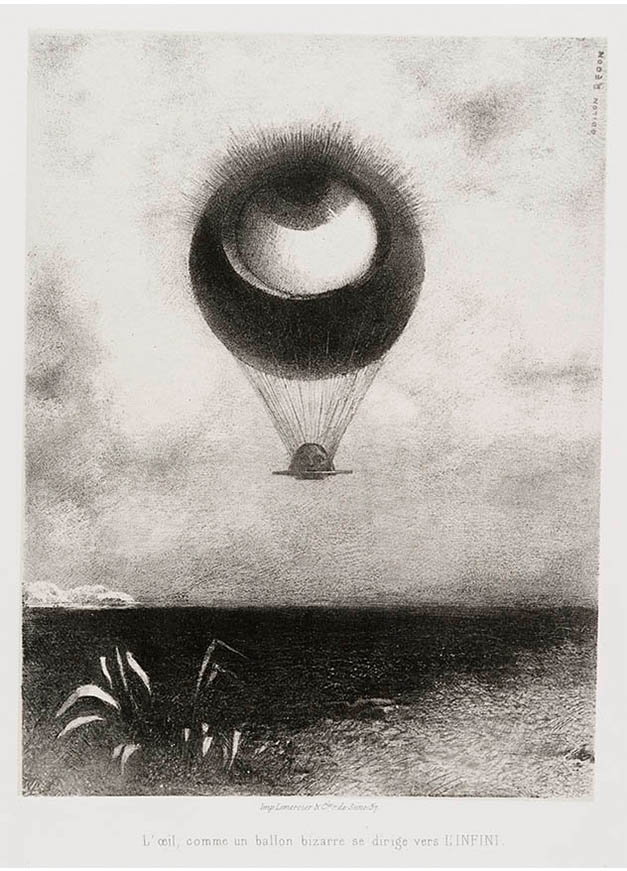
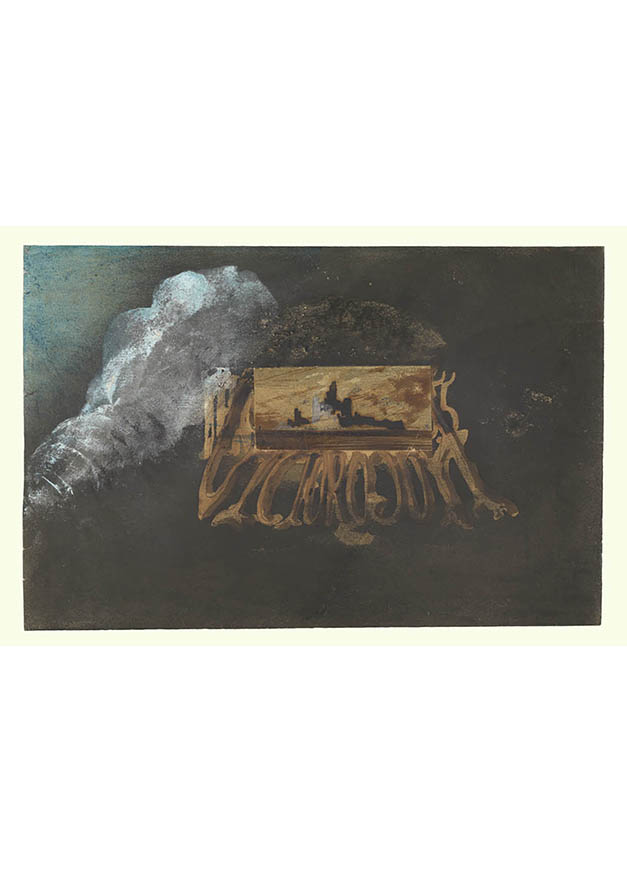
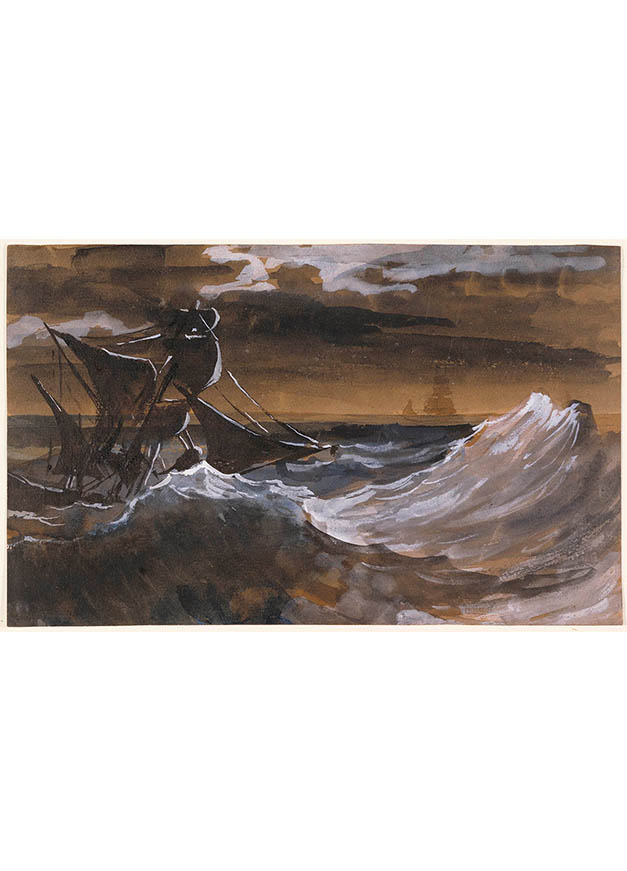
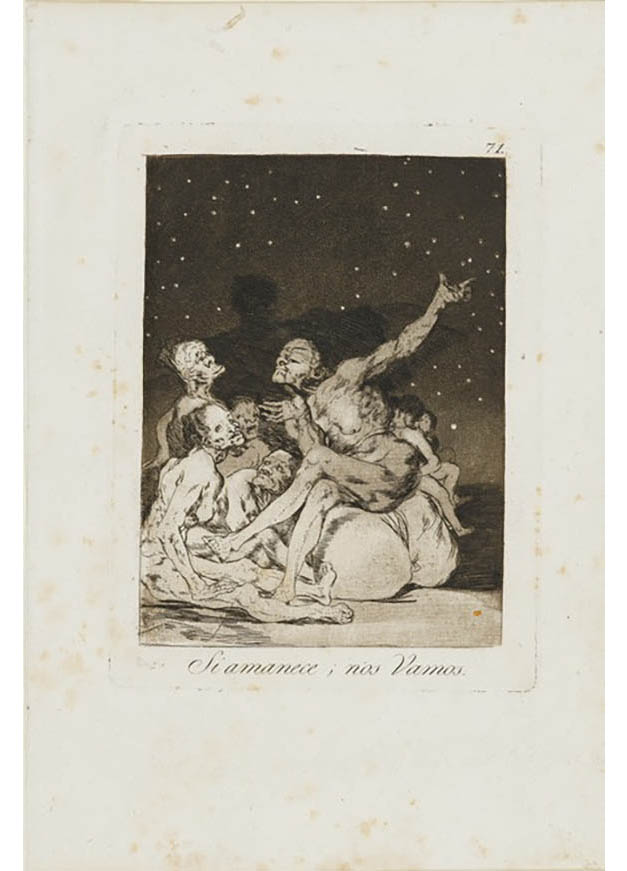
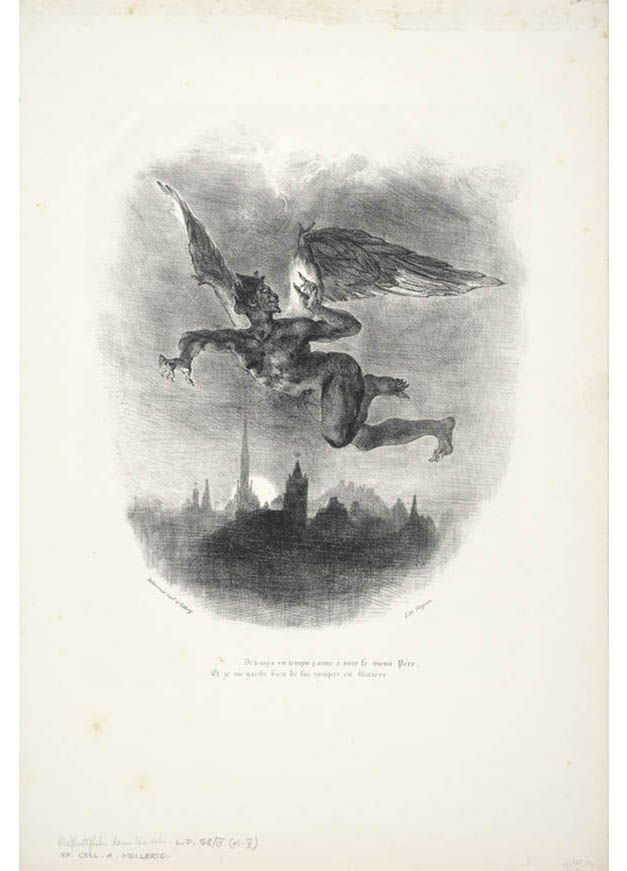


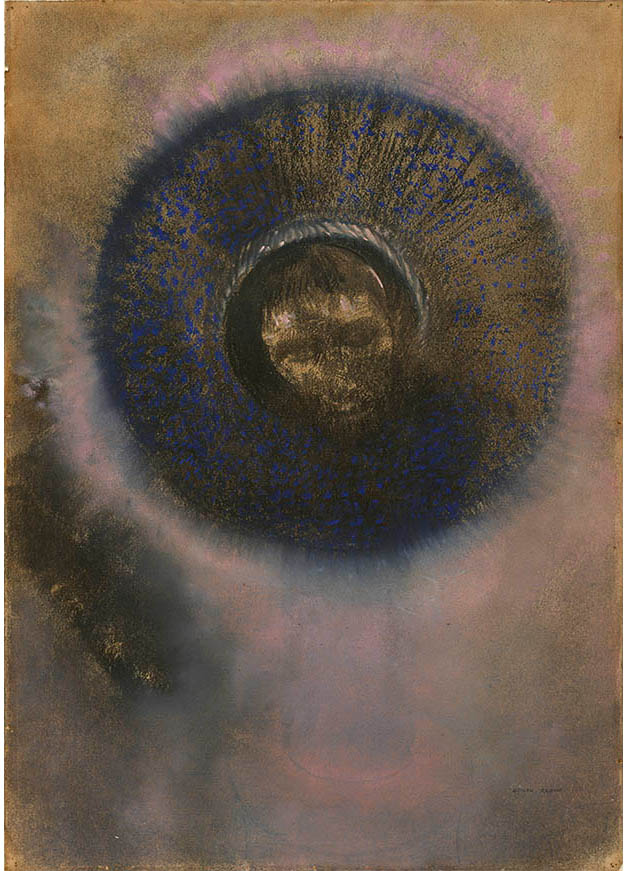
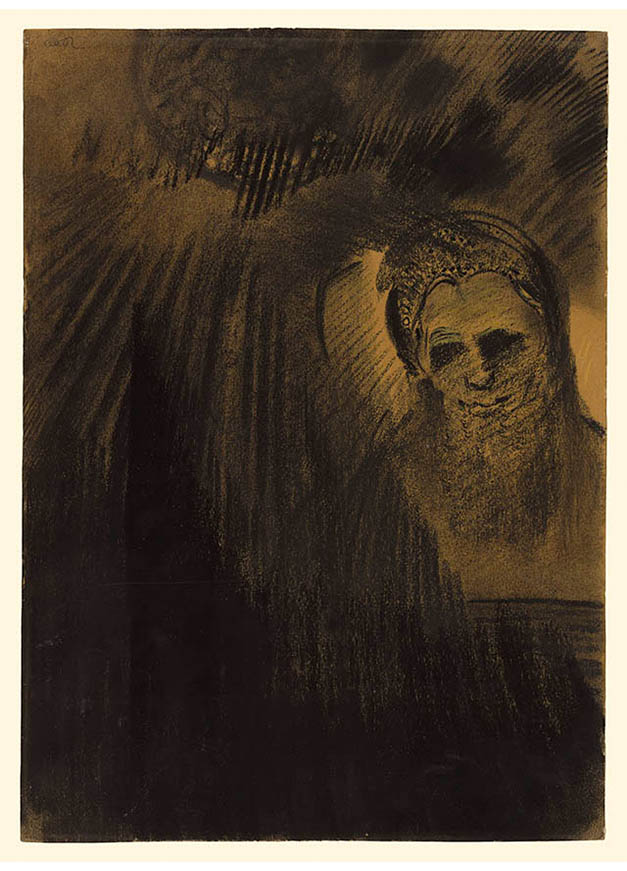

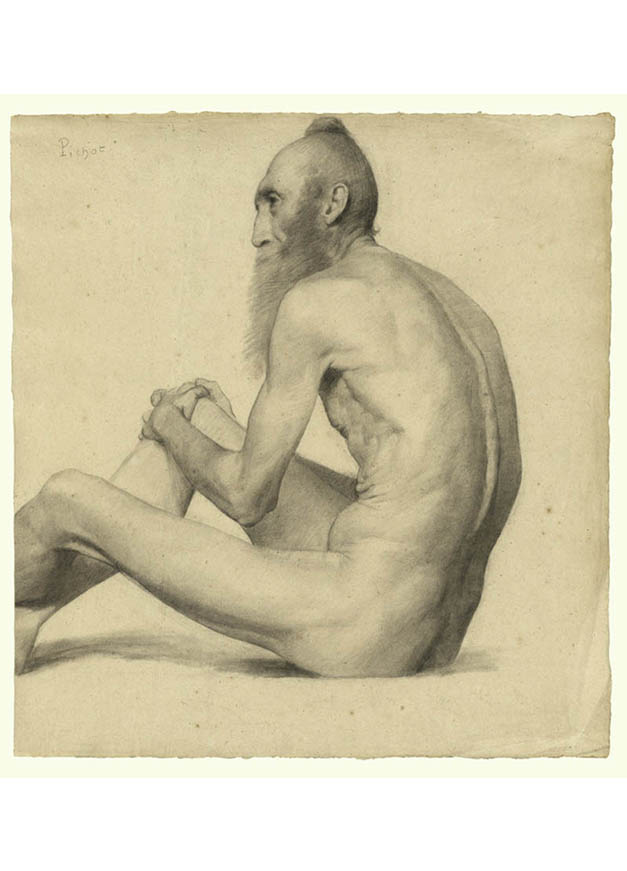
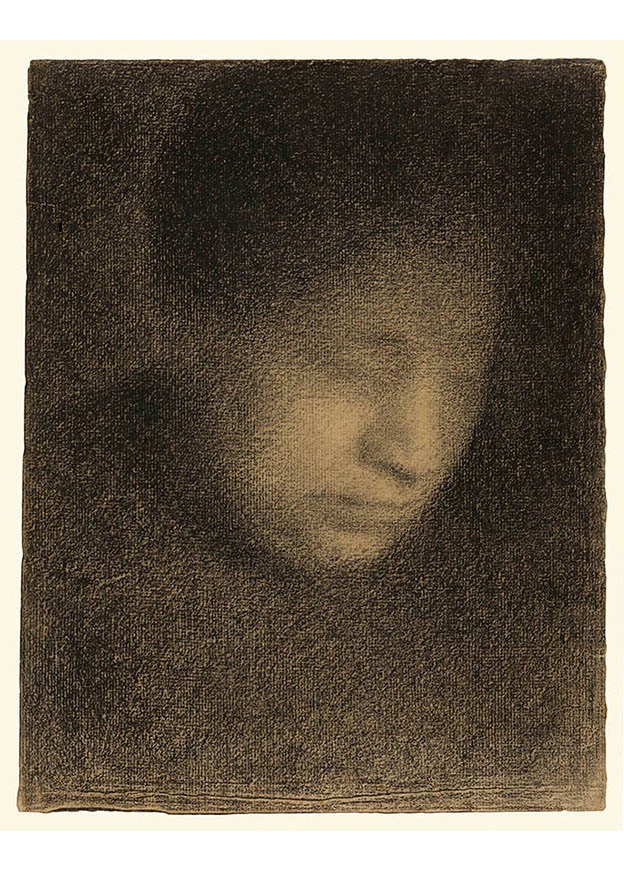




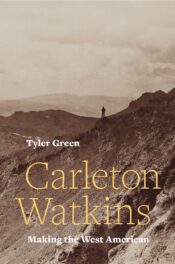
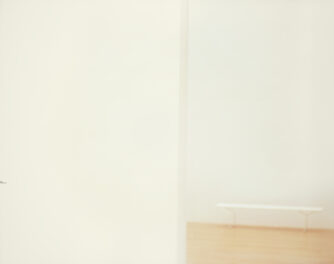
Comments on this post are now closed.